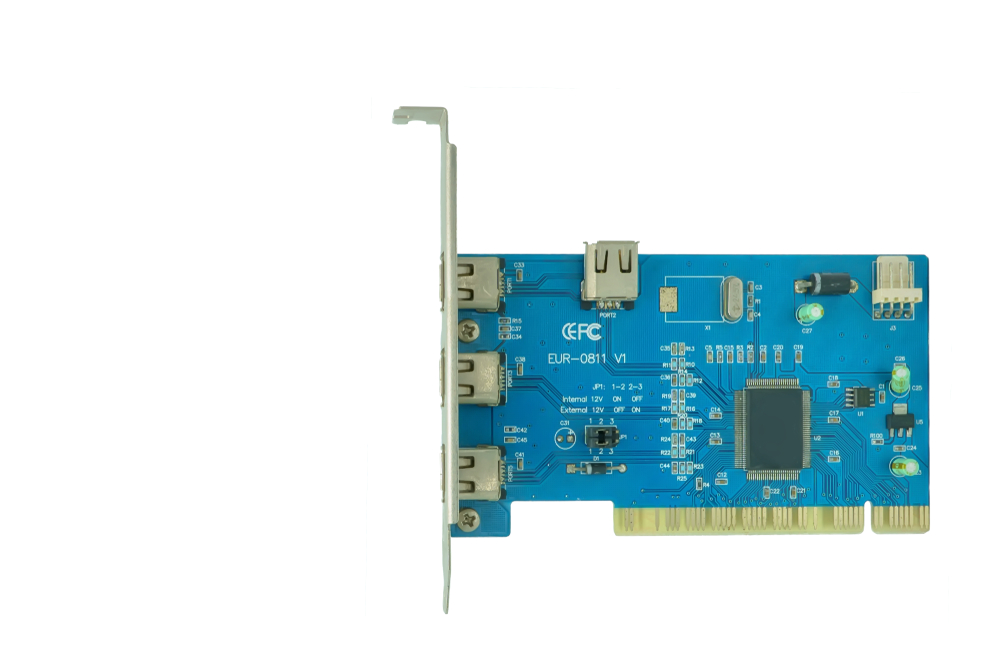The Role of Firewire Devices in Modern Technology
John David . Follow
4 weeks ago

In today’s fast-paced world of computing, staying updated with the latest technological advancements is essential for any IT professional or enthusiast. Firewire devices, while no longer the frontrunner in external hardware technology, remain crucial for specific industries and applications. Often overshadowed by newer connectivity options like USB 3.0 and Thunderbolt, Firewire devices still hold relevance, particularly in fields like multimedia production, data storage, and professional video editing. This article delves into the role of Firewire devices, their compatibility, and their enduring significance in computer hardware.
What Are Firewire Devices?
Firewire, also known as IEEE 1394, is a serial bus interface standard for high-speed communication and real-time data transfer. Developed in the late 1980s by Apple and standardized in 1995, Firewire was designed for applications requiring high data rates, such as video editing, audio processing, and multimedia storage. The technology became popular in the early 2000s and saw extensive use in digital cameras, external hard drives, and audio interfaces.
Key characteristics of Firewire include:
- High-speed data transfer: Firewire offers speeds of up to 800 Mbps (Firewire 800), making it ideal for data-intensive applications.
- Daisy-chaining capability: One of Firewire's unique features is the ability to connect multiple devices in a chain, reducing the need for numerous ports.
- Low latency and real-time data transfer: Firewire is designed to provide low-latency communication, making it ideal for audio and video work where timing is crucial.
Applications of Firewire Devices
Despite newer technologies like USB dominating the market, Firewire Devices still play a significant role in specific use cases, particularly in industries where reliable, fast data transfer is essential. Some common applications include:
-
Video Production and Editing Professional video editing requires the quick transfer of large video files, often in real-time. Firewire’s high data transfer rates and low latency make it ideal for this type of work. Many older professional video cameras and editing systems still rely on Firewire ports, and production studios often continue to use Firewire devices in their workflows.
-
Audio Recording Similar to video production, audio recording also benefits from Firewire’s low latency and real-time transfer capabilities. External audio interfaces used in professional recording studios often use Firewire connections to ensure that audio data is transmitted quickly and without delay.
-
External Storage While modern external hard drives mostly utilize USB or Thunderbolt, some high-performance Storage Devices still support Firewire for faster data transfers compared to earlier USB versions. These Firewire-enabled external storage devices are especially useful for large file transfers in multimedia production.
Advantages of Firewire Over USB
Though USB has become the more widespread and commonly used connection standard, Firewire retains certain advantages over USB in specific scenarios. Some of these advantages include:
- Constant throughput: Firewire devices are capable of maintaining a steady data transfer rate, whereas USB may experience fluctuations in speed depending on the device load.
- Power delivery: Firewire devices can draw more power through the Firewire connection, which means that in many cases, no external power supply is required for external hard drives or audio interfaces.
- Daisy-chaining devices: Unlike USB, which requires a hub or multiple ports for connecting several devices, Firewire supports daisy-chaining, allowing multiple devices to be connected to a single port.
Compatibility of Firewire with Modern Systems
One of the major drawbacks of Firewire in today’s market is its lack of widespread support on modern computers. Most new laptops and desktops no longer include Firewire ports, and users often have to rely on adapters or docking stations to connect their Firewire devices. However, for users working in fields like video production or audio recording, investing in Firewire adapters is often worth it for the performance benefits.
Adapters like Thunderbolt-to-Firewire and USB-to-Firewire converters allow modern systems to communicate with older Firewire devices. Additionally, some docking stations still include Firewire ports for professionals who need to integrate these legacy devices into their workflows.
Future of Firewire Devices
As the tech industry continues to evolve, Firewire Devices have become more niche, with USB and Thunderbolt becoming the standard for most consumer and professional applications. However, Firewire technology continues to hold relevance in certain fields where its unique features, such as consistent high-speed data transfer and low latency, are crucial.
For example, professionals in media production continue to use Firewire devices to support older yet reliable equipment. In these specialized applications, the reliability and performance offered by Firewire devices can be more important than adopting the latest technology.
How Firewire Devices Compare to Modern Technologies
When comparing Firewire to modern alternatives like USB 3.0 and Thunderbolt, it becomes clear that newer technologies offer faster speeds and broader compatibility. However, in certain scenarios, Firewire’s stable, real-time performance can make it preferable for professionals in media production and other technical fields.
Firewire vs. USB 3.0:
- Speed: USB 3.0 offers significantly faster speeds (up to 5 Gbps) than Firewire 800. However, for applications where stable, real-time data transfer is important, Firewire may still be preferable.
- Compatibility: USB 3.0 is far more widely supported by modern systems and devices compared to Firewire.
- Power Delivery: Firewire provides more power to connected devices, making it a better option for powering external hard drives or audio interfaces without needing an additional power supply.
Firewire vs. Thunderbolt:
- Speed: Thunderbolt offers speeds of up to 40 Gbps, making it much faster than Firewire.
- Flexibility: Thunderbolt supports multiple data protocols, including PCI Express and DisplayPort, making it more versatile than Firewire.
Despite these differences, Firewire’s stability and low-latency data transfer ensure it remains relevant for specific professional applications.
Conclusion
While Firewire may no longer be the most popular interface in IT hardware, its specialized applications in video production, audio recording, and external storage ensure that it remains a valuable tool for many professionals. With the right adapters and docking stations, Firewire devices can continue to be integrated into modern workflows, allowing users to benefit from their reliable performance and real-time data transfer capabilities.
For users in fields where stable, low-latency data transfer is paramount, Firewire continues to be a viable option even as newer technologies like USB and Thunderbolt dominate the market. By understanding the unique benefits that Firewire offers, professionals can make informed decisions about which Technology best suits their needs.
Recommended topics
Recommended from Guest Post

Genny James



